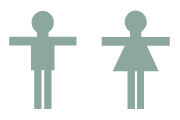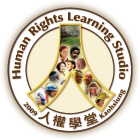
|
 Human rights crimes delicate subject
Human rights crimes delicate subject
BY BRONWYN EYRE, SPECIAL TO THE STARPHEONIX
Today, the fourth Saturday in November, marks Ukrainian Famine and Genocide Memorial Day in Canada. It's been 78 years since Josef Stalin perpetrated the Holodomor - the deliberate starvation of millions of Ukrainians - while the world turned a blind eye.
Ukrainian-Canadian groups lobbied hard to have the Holodomor recognized as a genocide. The Harper government did so in May 2008. Saskatchewan was the first province to do the same, also in 2008, and similar legislation was subsequently passed by Alberta, Manitoba, Ontario and Quebec.
The historic facts are chilling. By 1929, Stalin - fearing Ukrainians' growing sense of independence - had 5,000 leading Ukrainian literary and cultural figures either executed or sent to prison camps. The Ukrainian Orthodox Church was liquidated.
In 1932, food procurement quotas for Ukrainian peasants were set so unnaturally high, literally all their food was taken away by the state. A person could be executed for stealing even a grain of wheat from state-owned collective farms and the borders of Ukraine were sealed off by police.
What's puzzling is why the road to recognizing the Holodomor as a genocide has been so tortuous - and why Ukrainians continue to face so much opposition.
Earlier this year, some 200 international academics, from Harvard to Hamburg, took out full-page ads in a number of newspapers, criticizing the Ukrainian Canadian Civil Liberties Association and the Ukrainian Canadian Congress for the concerns these organizations have raised about the appropriate representation of the Holodomor in the Canadian Museum of Human Rights, currently being built in Winnipeg.
Apparently, the UCCLA and UCC have also "distorted historical accounts of the Holodomor" by "inflating" the number of victims to 7 or even 10 million.
"The implication is obvious," write the academics, who claim between 2.6 and 3.9 million died. "Seven or 10 million is more than 6 million - the Holodomor deserves more attention than the Holocaust."
That's quite an inference. The eminent British historian Simon Sebag Montefiore, who wrote a definitive, critically-acclaimed biography of Stalin, The Court of the Red Tsar, in 2003, puts the Holodomor numbers this way: "The death toll of this absurd famine was between 4 to 5 (million) and as high as 10 million dead, a tragedy unequalled in human history except by the Nazi and Maoist terrors."
In other words, it's hard to say for certain. But suggesting more than 6 million died doesn't make you a Holocaust denier.
Of course, the endless sparring over whose holocaust is bigger or smaller is precisely why the Canadian Museum of Human Rights itself is a tricky proposition.
In a recent speech at the University of Manitoba, CMHR president and chief executive Stuart Murray said that he doesn't want the museum to be a "centre for the commemoration of genocides - a museum not of human rights, but human wrongs."
Instead, the museum - which will apparently house a floor commemorating the Holocaust and other genocides and crimes against humanity - should inspire visitors to "better recognize the actions that lead to rights violations" and "harness the power of their stories."
Murray asks how Germany, for example, a "modern, advanced, democratic society," could have so quickly and violently collapsed into genocide.
But of course, Russia wasn't exactly un-advanced. After all, it produced Pushkin, Tolstoy and Shostakovich, and its cities are replete with centuries-old architecture.
Defining the perfect human rights crime, or criminal, can therefore be as difficult as defining the perfect human rights victim.
Would those same academics - who also criticize the UCC and UC-CLA for glossing over the extent to which some Ukrainian nationalists co-operated with the Germans during the Second World War - take out ads criticizing the Arab Spring protesters because some of them burn Israeli flags and destroy Christian churches?
Perhaps the best way to "harness the power" of past human rights wrongs is to make sure we don't look the other way - and aren't too selective about whom we criticize.
New York Times correspondent Walter Duranty famously denied any Ukrainian famine was taking place, which suited the world just fine.
In the film Harvest of Despair, about the Holodomor, there is footage of a little girl found wandering the outskirts of Kyiv. Asked what she was doing, she said she simply wanted to die and be with her mother.
And those academics dare tell Ukrainian Canadians they should "stay out of the debate" on the Canadian Museum of Human Rights?
Isn't that precisely the sort of attitude that's long been part of the problem?
bronwyn.eyre@sasktel.net
(2011-11-26/The StarPhoenix)
|





